The old downtown area of Monee is only a few blocks wide, but you can’t see from one end to the other, thanks to “The Cut.”
The Cut, a man-made ravine 25-feet deep and 83-feet wide at the bottom that stretches through the entire town, marked its 100th anniversary last year. It’s a prominent feature in the village. But there was no celebration.
The place was born as a railroad town after the Illinois Central established a station in the 1850s near Raccoon Grove, an area deeded by treaty to the descendants of Indiana fur trapper Joseph Bailly and his wife, Marie, a member of the Ottawa Tribe who was identified in several contemporary documents as “Mo-nee.”
It was high ground, a hill atop a glacial moraine formed in the final stages of the last ice age, and a booming town grew up around the depot, which provided direct access to Chicago. Creameries were established to process dairy products and send them north. Grain elevators lined the tracks and by the 1920s, four banks were established in the village incorporated in 1874 as Monee.
“We were one of the most populous, most established and most driving cities back in the 1850s and ’60s,” said Christina Holston, president of the Monee Historical Society.
“We were a victim of our own success.”
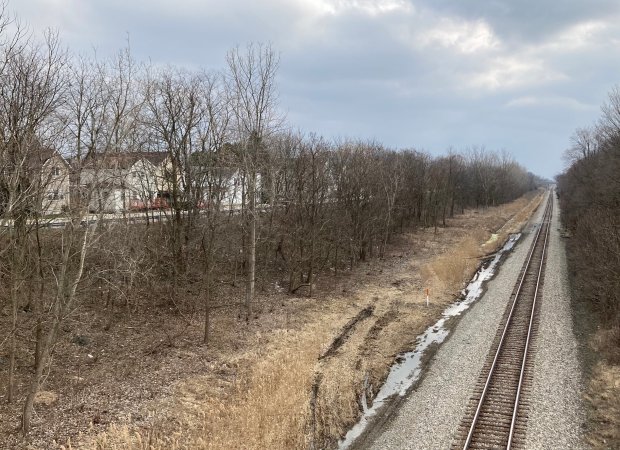
When the Illinois Central established its depot at what would become Monee, it wasn’t because of the vistas offered by high terrain. Rather, locomotives would be nearly out of steam after chugging up the long, morainal ascent, and water towers were established on both ends of the young town, along with housing for crews.
The demand for water outpaced the supply offered by a series of small ponds, and by 1916 the steam engines’ thirst was quenched by water from a much larger reservoir the railroad dug west of town that’s now one of the Forest Preserves of Will County’s foremost fishing properties.
There were a lot of trains to supply along “The Main Line of Mid-America,” a rail line connecting Chicago with the Gulf Coast. Decades later, in the fading days of mass rail travel, it would inspire the Steve Goodman hit song, “City of New Orleans.”
“By the ’20s, there were 1,100 freight trains coming through a month,” Holston said, “and 23 passenger trains a day. That’s unbelievable.”
There were several sidings at Monee but only two main tracks running through. And steam engines running uphill there could only carry so much. Monee’s bustle and hilltop position were clogging the system.
“It was a bottleneck,” Holston said.
By the early 1920s, the Illinois Central was good at moving earth. A series of agreements with leaders in Chicago had gradually upgraded the rail line there from its origins as a trestle bridge in Lake Michigan to a sunken thoroughfare surrounded by parkland above.
IC officials agreed in 1919 to eliminate most grade crossings in the city by raising its tracks and building viaducts for streets underneath while implementing infrastructure to electrify its entire fleet, starting with its commuter train line to the south suburbs.
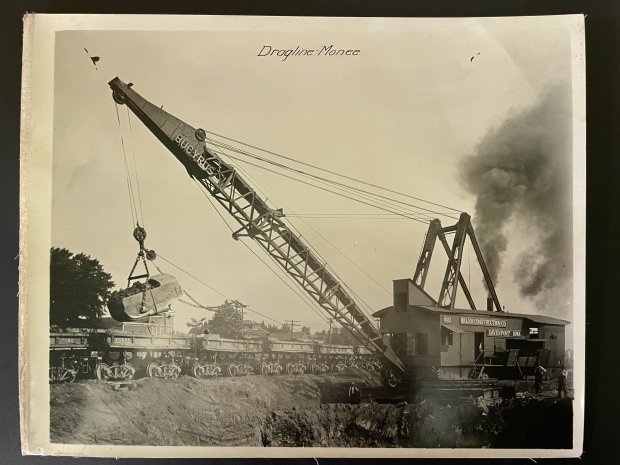
Railroad companies were rich and powerful in the opening decades of the 20th century. They could afford huge engineering projects and had government help along the way. But astute observers in the industry knew dark clouds were forming over Detroit, where automakers were making individual transportation unrestrained by tracks and timetables available to the masses.
One way to increase efficiency was to iron out the route, smooth all the bumps that slowed steam engines and required them to shed tonnage so they could make the grade. Another benefit was eliminating slowdowns at crossings and stoppages due to collisions with people, animals and increasingly common motorcars.
And the IC knew how to do it. In many places, tracks were raised. As the terrain gradually rose from the bed of ancient Lake Chicago at Homewood, the tracks remained at ground level while viaducts were dug underneath for cross traffic. The rails were raised again as the ground dipped to the south at Matteson and Richton Park before rising again at University Park, the end of the line for modern commuter service.
As early as 1891, the railroad purchased acreage in what would become Flossmoor with plans to excavate soil, load it on trains and ship it to Chicago where it was laying spur lines to service the impending Columbian Exhibition in Jackson Park.
The Flossmoor dirt, however, was too rich in clay, not crumbly enough for the IC’s purposes and it instead was used to raise the rail bed there. The Flossmoor Road viaduct was installed in 1912 and the rest of the land was subdivided into lots. The railroad built model homes along Sterling Drive and attracted potential buyers with excursion trains from Chicago featuring a free lunch.
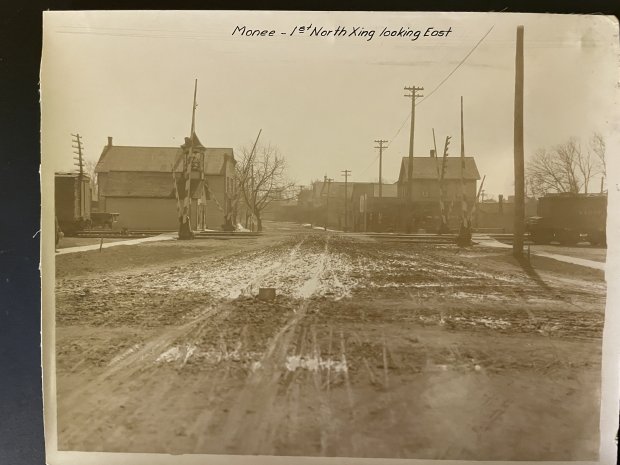
The Illinois Central had different plans for the bottleneck in Monee. Rather than creating buildings, it would be displacing nearly the entire business district.
After digging The Cut, trains could speed through town unimpeded, from the flat Illinois plains to the leveled line to the north.
“They didn’t have to slow down or stop,” Holston said. “It made a huge difference to them for the good, but that’s where the whole business district was. On one side of the tracks is Chestnut, the other side is Oak, and all of the businesses were up and down those two streets. When they put that big gash through the town, they had to move them.”
The old depot was demolished and a new one was erected 25 feet below in The Cut. The grain elevators had to move. The creameries closed.
“It really impacted, it killed the growth of the town,” Holston said. “It stagnated for the rest of the 20th century.
“It wasn’t too many years later that passenger trains didn’t stop anymore in Monee at all.”
The new depot in The Cut was demolished, and eventually the tracks running through Monee were reduced to a single line.
“Trees have grown up so much now that from one side of the tracks you can’t even see the other side,” she said. “So the town is really two towns.”
On the west side there’s Illinois Route 50, where a few restaurants and bars have operated over the years, but they don’t generate lots of foot traffic. Interstate 57 came along at midcentury and eventually attracted exit ramp development.
On the east side of The Cut, “throughout my living memory, there wasn’t much,” Holston said. “When the train went down, most of the mercantile business died with it. People could get in their cars and go elsewhere. There was no quid pro quo, no tit-for-tat. That died and nothing much took its place.”
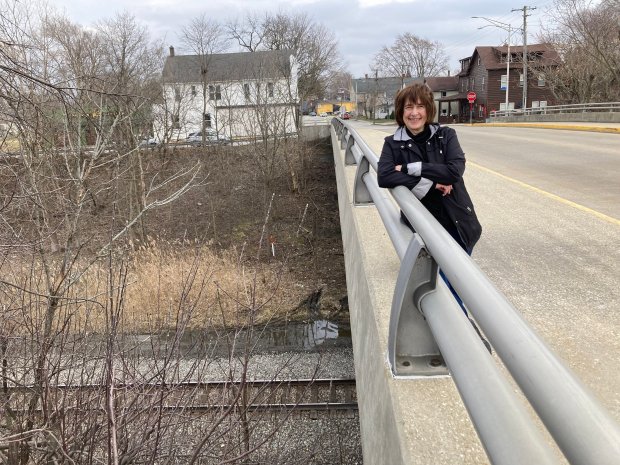
The surviving structures were mostly converted into homes and several still exist along Oak, Chestnut and Main streets. Monee largely embraced its bedroom community status.
“We like it how we like it, and we like being a small town,” Holston said. “That’s the thinking of the town fathers through a big part of the 20th century.”
In 2011, an effort to prevent the demolition of a structure that predates The Cut — a limestone barn along Court Street that long ago housed one of Monee’s creameries — resulted in the creation of the Monee Historical Society. Now based in the creamery, renamed the Monee Heritage Center, Holston and fellow volunteers try to regain some of Monee’s lost history.
“There are four or five houses we know the history of. We want to research more and find out at least dates, to get the awareness of our history,” she said. “There never was a historical society in Monee until 2011, no organized effort to collect data and artifacts. Everything we’re doing is in the last 12 years.”
So they’re collecting heyday stories from before The Cut, and snapshots of life afterward. There’s tales of revelry and vice at the dance halls and party places around Raccoon Grove, a destination popular enough to merit a stop on the interurban trolley line from 63rd Street in Chicago.
The town cemetery established a potter’s field section because “every time you’d turn around, someone was falling off the train or walking in front of a train. They were hard times back then — not a lot of safety measures,” Holston said.
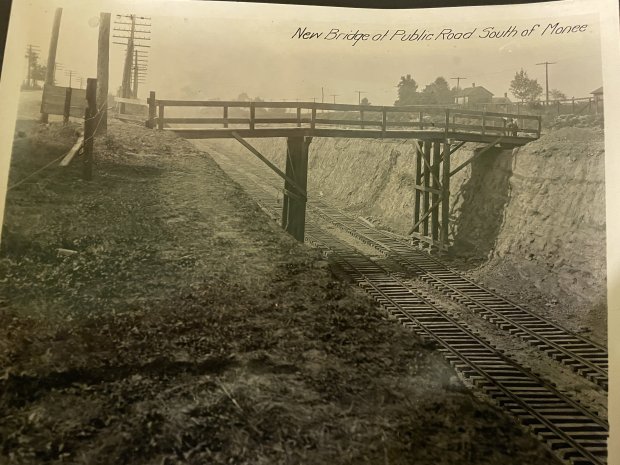
And there’s stories of how The Cut was carried out in 1922 and ’23. She’s collected anecdotes of how farmers were hired to bring in teams and wagons to haul material, and how most of the excavated material was taken “straight up the line to Richton Park and Matteson,” where the rails are elevated, Holston said. “That’s Monee dirt.”
Some people recollect how a Model T Ford could fit on an old pedestrian bridge across The Cut that’s since been demolished, and the hue and cry from the populace when that bridge, a popular gathering place especially among teens, was removed in 1989.
But as far as she can tell, the IC didn’t face any opposition when it brought the idea for The Cut to town over a century ago.
“It was Goliath and David,” Holston said. “Monee is just Monee. It didn’t stand a chance against the wheels of progress that way. I have a feeling a few palms were greased, but I doubt that most people saw what the long-term ramifications really were going to be.”
Had they put up a fight, things might have turned out differently.
“If it could have held on another 10 years, it probably wouldn’t have been an issue because right after that, the diesel engines started to come in,” she said.
Landmarks is a weekly column by Paul Eisenberg exploring the people, places and things that have left an indelible mark on the Southland. He can be reached at [email protected].
Paul Eisenberg , 2024-03-03 11:06:02
Source link


